STEEM WILL FEED THE WORLD: The cultivation of sweet pepper and how to obtain the seeds
On this occasion, I will express my support for the SteemChurch project @Farms of @abiye and, of course, the great Lord @Sirknight, for making this important humanitarian project a reality. Here is my humble and sincere contribution to this noble cause.
This is a course to explain them in a simple way, about the cultivation of sweet peppers, in orchards or open fields, it is important to learn how to obtain our own seeds and the steps to prepare the seedbeds, which will be the place where you will place the seeds so that germinate and then transplant. The content of this topic, begins with a brief review on this crop, the obtaining of the seeds, the construction of the seedbeds until the production of its fruits, I hope that this course is profitable for all.
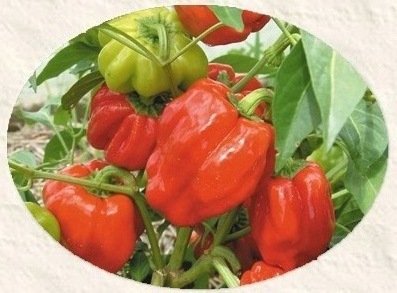
Fuente
Cultivation of sweet pepper (Capsicum Annum)
It is a traditional crop, it is a vegetable in great demand for use in the culinary arts in many parts of the world, there are many varieties that differ from each other by their elongated lobes, round, smooth and three to four lobes, as well as the variety for its fragrance and flavor. Sweet pepper is a favorite vegetable for the preparation of stews and sauces, being the most important seasoning in all homes, especially in Latin American countries.
The sweet pepper, is a plant whose height varies between 0.80 m and 1.10 m, this crop requires an average room temperature of 25 ° C. The ideal soil for this crop is one that has good drainage, with the presence of sands and organic matter; It is important to note that some varieties have been genetically modified, for greater resistance to climate changes, as well as to land variability.
Sweet pepper plant
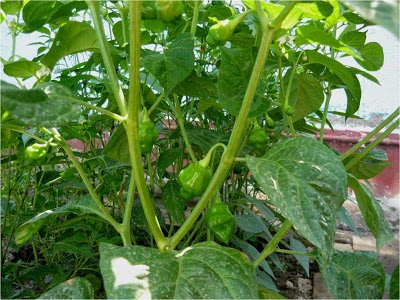
Fuente
Propagation mode of sweet pepper plant
The pepper plant extends through the seeds, currently there are many varieties that have been genetically modified to improve their size, color and taste, and to try to eliminate a pungent substance, known as capsiacin, which is the substance that produces the peppers, cause itching and burning, this type of seeds are obtained in companies dedicated to the sale of agricultural products, but to save us in the purchase of seeds, in this course I have included the form of how to obtain our own seeds of pepper.
How to get sweet pepper seeds
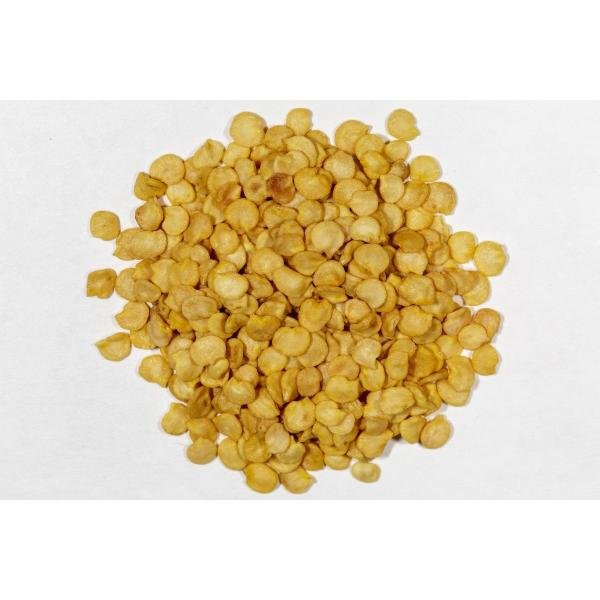
Fuente
In this opportunity, I want to teach you how to obtain your own seeds of a fruit, the first thing you must do is obtain good fruits, you can buy them in the vegetable markets, trying to take into account the following:
- The fruit must be ripe, with an intense red color
- The fruit should be of good size and well formed
- Watch out! with spicy fruits.
- It is important to reject any sweet pepper that presents deformations, dark spots or necrosis, since it is most likely that they are infected by a virus.
Steps to extract the seeds of pepper
Once we have healthy fruits on hand, we will proceed to extract their seeds as follows:
- The first thing we must do is protect our hands with special gloves to manipulate food, to avoid direct contact with some hot pepper that may cause us some allergy.
- Then cut a chili longitudinally, to see the placenta with the seeds attached, but the most important thing is to note that in this placenta, there are differences in the size of the seeds, they start with good size and end too many small which We have to refuse at the time of selection.
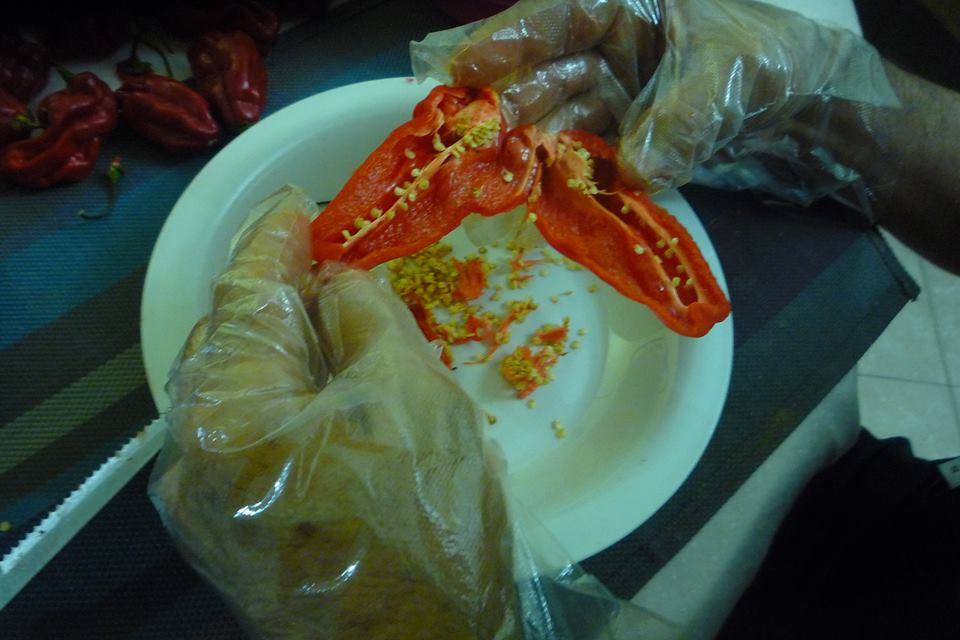
- Now we start to extract the seeds, cut the fruits and remove the placenta very carefully, select the seeds that are more uniform in size, and reject the small ones.
- The selected seeds can be placed in a plastic or glass dish, and then we dry them with a fan, it is not necessary to expose them to the sun, and this way we will avoid that they are burned and damaged.
The important thing is to obtain seeds of good quality, so that in our seedbeds healthy and vigorous plants of a uniform size are produced, the secret to achieve good yields in any crop, depends on the quality of the seedlings that are produced in a nursery.
Preparing the seedbeds
In general, the cultivation of sweet pepper , is done through the transplant system, that is, we must prepare the seedlings or the seedbed, where we will germinate the seeds that after 30 days, we hope they are ready to transplant in the field or orchards. To develop the nurseries, it is necessary to carry out the following practices:
- Locate the nursery beds near the place where the crop will be set and also choose an area that does not have flood hazards in the event of rain.
- The nursery beds are usually rectangular, using wood in the bands, there are those who use cement blocks, everything depends on the material that is available, but the important thing is to give it its shape, it is advisable to make them one meter wide, to facilitate manual cleaning tasks, so that we can reach the center of these. As for the length of the beds, these depend on the number of plants required, we can place 2 grams of seeds per square meter, taking into account their distribution and not be stuck; Each gram contains an approximate quantity of 750 seeds.
- We must remove the soil to 20 centimeters deep, so that it is quite loose and free of clods, is important in this task, and at the same time take advantage of to incorporate to the earth fertilizers based on earthworm humus, livestock manure, horses or gallinaceas, and to avoid that these excrements may contain some bacteria, I recommend applying phyto health products for protection such as: fungicides such as Mancozobet or Ridomil.
- After having removed the earth, and our seedbed has its shape, we proceed to level the earth with the use of a rake and a wooden ruler, this practice is done to remove lumps and to make the surface level. Next step consists of the manual distribution of the seeds, we must try that the seeds have a separation between 1.5 and 2 days, this is important so that the plants do not compete with each other for light, because if the seedlings are very stuck, they will grow with elongated and thin stems, for that reason I insist, in trying that the seeds are separated.
- Once the distribution of the seeds on the surface of the quarry is done, we proceed to cover them with a thin layer of sifted sand, it is recommended that this layer of sand is not larger than 1 cm.
- The next step is to apply a light irrigation with the use of a shower, in case you observe some seeds discovered, proceed to cover them with sand.
- Irrigation should be done in the morning and in the afternoon, applying light irrigations, only to keep the soil moist, because we must avoid puddles so that the seeds do not rot.
- the seeds of chili pepper take between 8 and 12 days to germinate.
- Then after 10 days of germination, it is necessary to apply every 7 days on the seedlings, a solution composed of fungicides and foliar fertilizer with high phosphorus content, for the development of the roots.
- It is important to keep the nurseries free of weeds.
- The seedlings will remain in the seedbed, an approximate time between 25 and 30 days, the ideal state for the transplant, is when the plant reaches a height of 10 to 12 centimeters.
Another option is to make the seedlings in germination trays. I recommend seeing my publication in the following: LINK Where I explain with details and photos, the development of seedlings in germination trays.
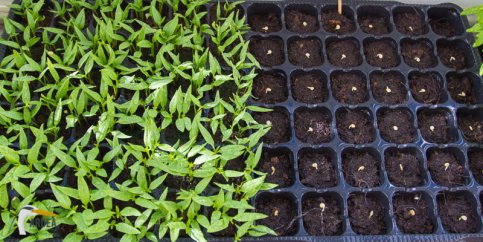
Fuente
Preparing the soil for the transplant and the irrigated furrow
When the seedlings have reached a height of 10 to 12 cm in the nursery, we can say that they are suitable for the transplant in the open field or in the garden. Because there are two forms of production, one of them are the orchards, which are small amounts of plants only for domestic use, which are planted in gardens or patios, and another are the crops with commercial destinations, which are open-field plantations. where one requires a significant extension of the land, and it is required to prepare the land with the use of agricultural machinery.
Before performing the transplant, it is necessary to prepare the area of the land with the use of agricultural machinery to plow the land well, with several passes of harrow until the soil has a loose texture and free of clods and eliminate remains of weeds. It is important to plow the soil well, to crumble or loosen the soil before sowing, in order to favor the aeration of the soil.

Construction of the irrigation furrows
Before the transplant, the furrows must be constructed for irrigation, with the use of a tractor and the equipment for furrowing, where we must place the furrow hooks so that there is a separation of one meter between each line of the irrigation furrow.
Transplanting sweet pepper seedlings
This consists in taking the small plants, from the seedbed to the place where they will develop and produce their fruits, as I pointed out previously, there are two forms of production, one in orchards and another in the open field.
To extract the seedlings from the seedbed it is necessary to moisten the soil well in order to remove them more easily and so that the roots are not damaged, the seedlings will be placed in rows every 40 centimeters on each side of the irrigation rows and between them and 1 meter between rows understanding that the furrow was made at a distance of one meter in parallel between rows.
Fertilization program
- Apply the slow-action granular fertilizer N-P-K 12-24-12 to the irrigation furrows five days after the transplant and then continue every 30 days.
- Apply with use of asparejadora, foliar fertilizer with high content of phosphorus + Fungicides five days after the transplant. and foliar fertilizer of earthworm humus this can be applied throughout the crop.
- Apply with the use of sprinkler, foliar fertilizer complete formula N-P-K + Fungicides from ten days after the transplant, for flowering apply foliar fertilizer with high potassium content.
Irrigation plan
The irrigation is carried out through the furrows, this is the most used system, and consists of supplying water to the plant by gravity, the cultivation of chili, requires intermediate irrigation during the first month, then and until the end of its vegetative cycle , these irrigations will be done every two days, although the sweet pepper is a plant with many deep roots, the lack of water causes defoliations and falls of flowers and fruits, so we must comply with the irrigation program.
Plagues and diseases
- Aphid (Aphis gossypii and Myzuspersicae) and the Red Spider (Tetranychus urticae): These can be observed on the back of the leaves.
- The whitefly (Trialeurodes vaporariorum): This is one of the most damaging pests caused to the cultivation of chili, when they invade the plantations produce leaf defoliation, which begin with a yellow color because they extract the sap from the leaves , and we can observe them on the back of the leaves, this plague produces a molasses staining the whole plant and its fruits and transmits a virus that delays the development of the plant.
To control these pests, it is necessary to constantly check the crop, so that when observing any presence of the pests mentioned, immediately look for the appropriate products to stop the evolution of these, because any carelessness will imply greater spending on products until the loss of the plantation, there are many products in the market of natural origin and chemicals, which are very effective in controlling these pests.
Indeed this post has been of great benefits to all parishioners who wish to practice agriculture.. thanks for sharing this wouderful written pos
Resteem
(to be a part of this community; ensure to always use #farms and #steemchurch tags for agricultural related post)
Thanks @farms, the idea of this post is to share my experiences so that many of this community learn to plant, even in an orchard, I am willing to support this great project of SteemChurch @Farms of @abiye
Congratulations! Your entry won an Honorable Mention in the Abandoned Shit Weekly Contest "freestyle" theme. I have upvoted this most recent post at 100%!
Thanks @customnature, I will review the publication
Much appreciated, the key to the accomplishment of a decent estate.
thanks for sharing .
Thank you @pirsamads, this is a great project that deserves support, greetings.
exceptionally itemized production that you do, the data is phenomenal, on the most proficient method to deal with the procedure of seed accumulation and the ensuing sowing. Great job.
Thanks @moize, the idea of this message is to share my experiences so that many learn and join the SteemChurch project @Farms of @abiye
Much valued, the way to the achievement of a better than average bequest.
Thanks for your contribution and logo.
A debt of gratitude is in order for your contribution....... delightful flyer.
Hello @oscarcede, a very detailed publication that you do, the information is excellent, on how to manage the process of seed collection and the subsequent sowing. Good job.
Thanks, the secret to the success of a good plantation, is in the quality of the seeds and the care of the plants in the seedbed, greetings.